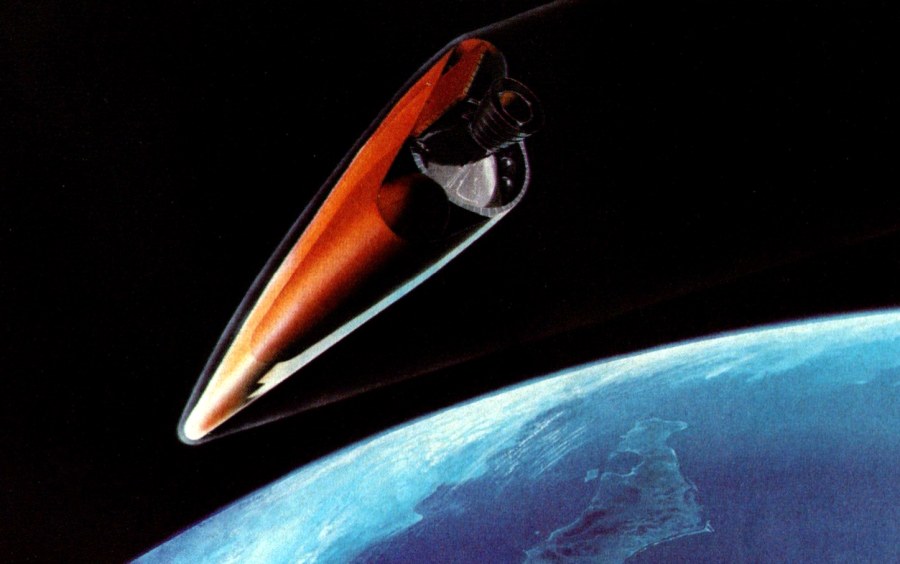A Boeing concept from 1983 for an Orbital Transfer Vehicle. This vehicle would change the orbit of the payload not only propulsively, but by using aerodynamic drag to slow the vehicle at perigee. When returning a payload from geosynchronous orbit, it would dive into the upper atmosphere and use aerodynamic lift and drag to slow into a much lower orbit, with propulsive adjustments to put it into a circular orbit for rendezvous with a space Shuttle for recovery or servicing. This particular design was inflatable (creating a lifting body akin to a stretched-out “ASSET” shape) and used an extendable/stowable nozzle. Note that it is entering “upside down” so that the lift forces generated are trying to force it *closer* to Earth, rather than trying to bounce off the atmosphere.
Orbital velocities at geosynchronous are slower than in low Earth orbit… about half the speed. So a relatively small change in velocity at geosynchronous will turn the circular orbit into a sharply elliptical one, with a perigee close to Earth. But that velocity at perigee is much faster than circular orbit velocity, so shedding speed using “free” aerodynamic forces makes sense… if you can pull it off.
